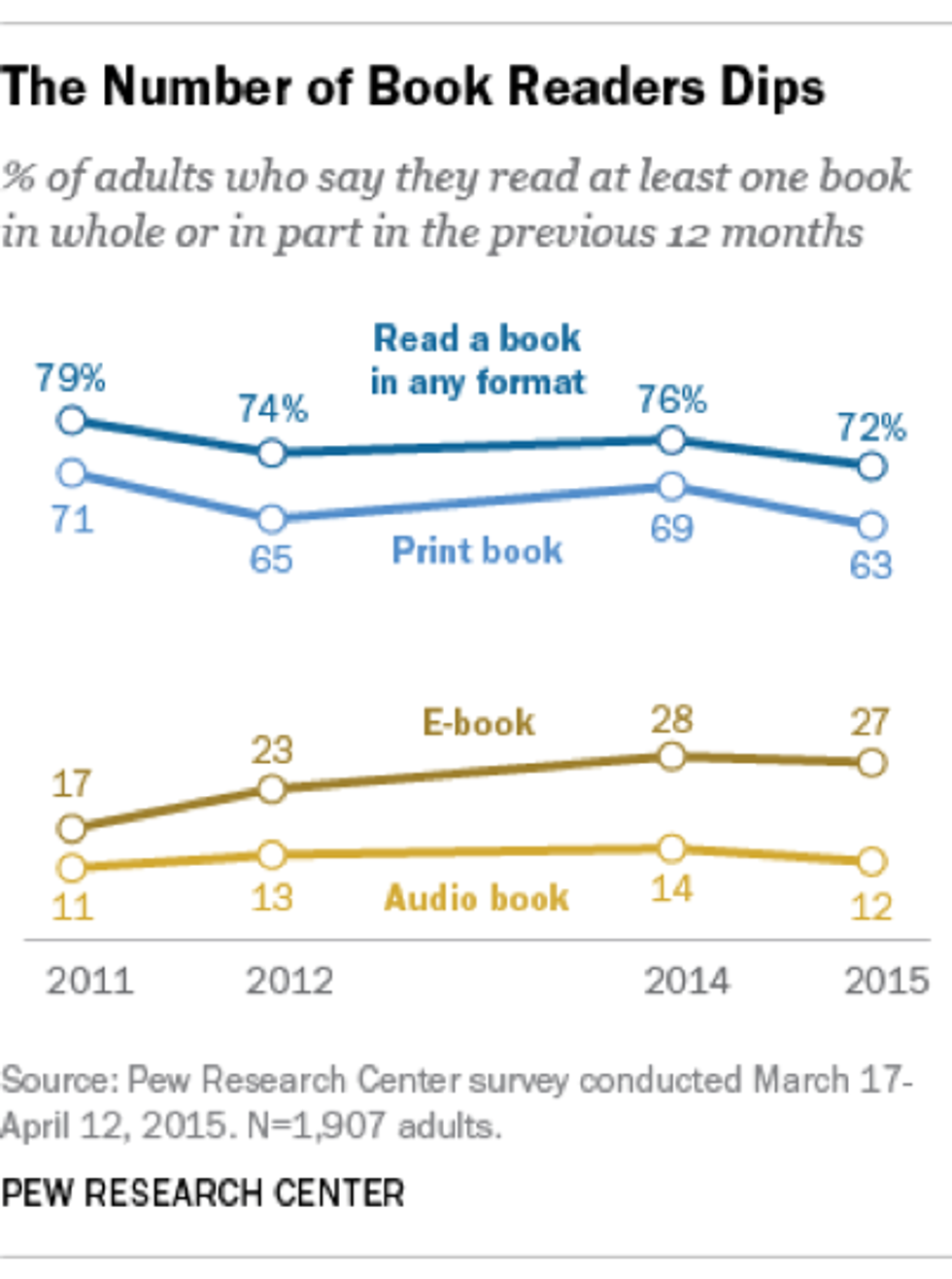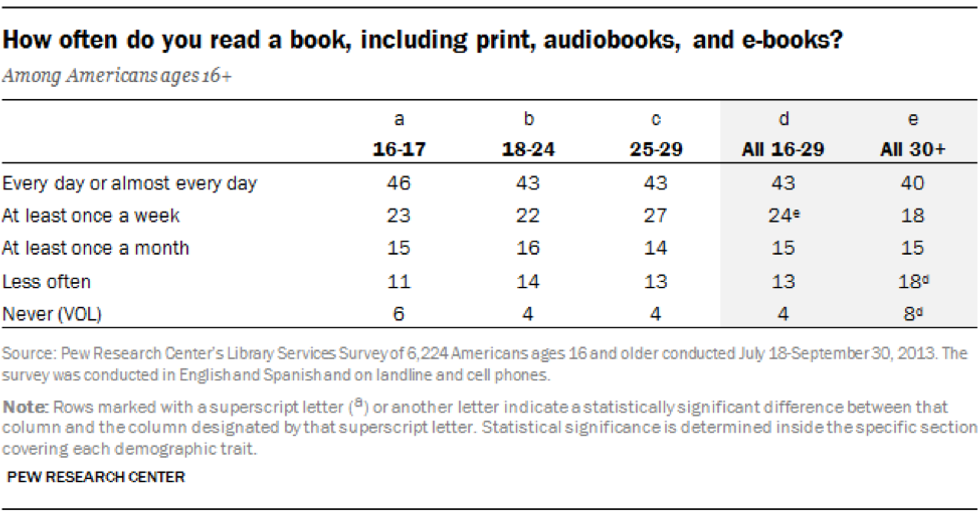It’s the 21st century. Sparknotes has “revolutionized” reading, morphing classic novels into a list of essential plot points. Twitter has turned three-page news reports into just a headline. If you are brave enough to major in anything slightly related to journalism or print communication, you’re doomed, of course, because print is a “dying medium."
But is print really dying? Is it already dead? Not so fast. Over the last decade, the question of whether or not print’s nine lives have been spent has been plaguing the marketing industry and studies are beginning to indicate that it’s time hasn’t quite run out.
According to a study conducted by the Pew Research Center, seventy-two percent of American adults have read a book in the last year. Granted, this is not as high as in past years, dropping from seventy-nine percent in 2011, but there is one group of individuals holding on and possibly even driving the survival of books everywhere. And get this- its not who you think it is…
MILLENIALS.
That’s right- chances are if you’re reading this, you are a member of the leading generation driving the survival of print media everywhere. Despite our need for efficiency and draw to technology that tends to simplify, we as a generation have risen to the paper-bound occasion and held the print industry firmly in its rightfully-deserved place in society. Research conducted by the Pew Research Center indicates that, despite our natural inclination toward information technology, 88% of millennials (Americans under 30 years of age) have read at least one book in the last year, combating the 79% of those over 30. Studies have also shown that as a group, Americans under age 30 are 9% more likely to read a book at least once a week than those over 30.
But where is the public turning to get their Harry Potter fix? Apparently, not their kindles. After the Great E-book Migration of 2008, the experience of holding a hard cover book in your hands was expected to disappear, only to be replaced with a flat-screen novel. The iPhone was doing it to news, contact books, and essentially all social experiences, so why couldn’t it happen to books? They’re heavy, they smell funny, etc.
Based on research done by the Association of American Publishers, print sales have actually held their place in the market, despite what the marketing industry seems to believe. Thanks to adjustments in using data analysis to manage print inventory, companies like Barnes and Noble can happily stay afloat by determining more accurate order sizes for the books that are statistically in demand. By 2011, the e-book craze became a fad and the print industry was and IS back in its rightful place. So journalism majors, you can breathe again.




















